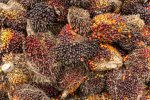The demand for edible oils and fats has been steadily rising due to their versatile applications in the food industry. One prominent source of edible fat is palm oil, a versatile and widely used vegetable oil. Edible shortening flakes made from palm oil offer a convenient and shelf-stable form of fat, suitable for various culinary applications. This essay explores the intricate process of manufacturing fat flakes, focusing on palm oil-based shortening, from raw material extraction to the final product.
I. Overview of Palm Oil
A. Palm Oil Production
Palm oil is derived from the fruit of the oil palm tree (Elaeis guineensis). The major producers of palm oil are tropical countries, with Malaysia and Indonesia dominating the global market. The oil palm tree produces fruit bunches containing a mixture of palm oil and palm kernel oil, which are separated during processing.
B. Palm Oil Composition
Palm oil consists of various fatty acids, including saturated fats, monounsaturated fats, and polyunsaturated fats. The unique composition makes it suitable for a range of applications, from cooking oil to margarine and shortening.
II. Shortening Flakes: An Overview
A. Purpose of Shortening:
Shortening is a type of fat used in baking and cooking to create a tender and flaky texture in pastries, pie crusts, and other baked goods. Shortening flakes, as a derivative, offer a convenient and easy-to-measure form of shortening for commercial and home use.
B. Properties of Shortening Flakes
- Solid at Room Temperature:
- Shortening flakes are solid at room temperature, providing structure to baked goods.
- Versatile:
- They can be used in various culinary applications, from frying to baking.
- Extended Shelf Life:
- The flake form contributes to a longer shelf life compared to liquid oils.
III. Manufacturing Process
A. Selection of Raw Materials:
- Palm Oil Quality:
- High-quality palm oil with a balanced fatty acid composition is crucial for producing superior shortening flakes.
- Additives:
- Emulsifiers and antioxidants may be added to enhance stability and prevent oxidation.
B. Refining Process:
- Degumming:
- The crude palm oil undergoes degumming to remove impurities such as phospholipids.
- Neutralization:
- Sodium hydroxide is used to neutralize free fatty acids, forming soapstock, which is separated from the oil.
- Bleaching:
- Activated clay is employed to remove pigments and other impurities, resulting in a clearer oil.
- Deodorization:
- Steam is passed through the oil to remove volatile compounds that could affect flavor and stability.
C. Fractionation:
- Crystallization:
- The refined palm oil is cooled to induce crystallization, separating the oil into liquid olein and solid stearin fractions.
- Separation:
- Mechanical separation methods, such as centrifugation, are used to isolate the stearin fraction, which is the basis for shortening flakes.
D. Shortening Flake Formation:
- Agglomeration:
- The stearin fraction is agglomerated into flakes through a controlled cooling and solidification process.
- Cutting and Sizing:
- The agglomerated mass is then cut and sized into uniform flakes for easy handling and packaging.
E. Packaging:
- Protective Packaging:
- Shortening flakes are packaged in protective atmospheres to prevent oxidation and maintain product quality.
- Labeling and Information:
- Packages include essential information such as nutritional content, usage instructions, and storage recommendations.
IV. Quality Control and Assurance:
A. Testing Parameters:
- Fatty Acid Composition:
- Ensuring the desired balance of fatty acids for optimal functionality.
- Color and Clarity:
- Monitoring the color and clarity of the product to meet quality standards.
- Oxidative Stability:
- Conducting tests to assess the product’s resistance to oxidation and rancidity.
B. Regulatory Compliance:
- Food Safety Standards:
- Adherence to regulatory standards, such as those set by the Food and Drug Administration (FDA) or relevant local authorities.
- Labeling Compliance:
- Ensuring accurate and transparent labeling in accordance with industry regulations.
V. Applications and Culinary Uses:
A. Baking:
- Pie Crusts:
- Shortening flakes contribute to the flakiness of pie crusts, enhancing texture and mouthfeel.
- Biscuits and Pastries:
- Used in biscuits and pastries to achieve a tender and crumbly texture.
B. Frying:
- Deep Frying:
- Suitable for deep frying due to the stable nature of the flakes at high temperatures.
- Coating and Breading:
- Provides a crisp and golden coating for fried foods.
C. Cooking:
- Sauteing and Pan-Frying:
- Adds a rich flavor to sautéed dishes and pan-fried recipes.
- Stir-Frying:
- Used in stir-frying for a smooth and consistent texture.
VI. Environmental and Sustainability Considerations:
A. Sustainable Palm Oil:
- Certification Programs:
- Manufacturers may opt for palm oil certified by organizations like the Roundtable on Sustainable Palm Oil (RSPO).
- Supply Chain Transparency:
- Ensuring transparency in the palm oil supply chain to promote environmentally responsible practices.
B. Waste Management:
- By-Product Utilization:
- Exploring ways to utilize by-products from the manufacturing process, such as palm kernel meal.
- Recyclable Packaging:
- Implementing eco-friendly packaging options to minimize environmental impact.
VII. Conclusion
The manufacturing process of edible shortening flakes from palm oil involves a series of carefully orchestrated steps, from selecting high-quality raw materials to the formation of the final product. Shortening flakes, with their convenient form and versatile applications, serve as an essential ingredient in the culinary world. As the demand for edible oils continues to grow, it is crucial for manufacturers to prioritize quality control, regulatory compliance, and sustainability to meet the evolving needs of consumers and contribute to a more sustainable future.

Leave a Reply